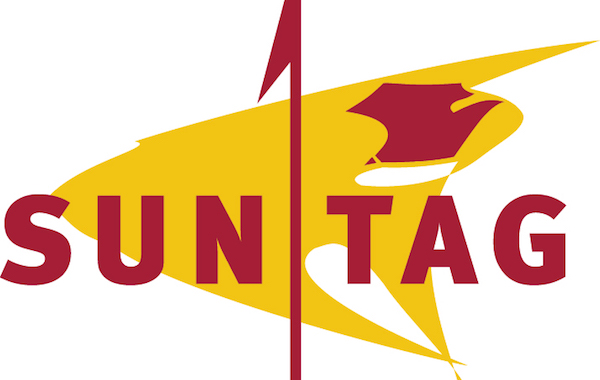Download The Report
Targets for 2019-20
1. Tag 20,000 fish
2. Record 1,500 recaptures
3. Registered taggers in range of 400-500
4. Upgrade database
5. Provide data to researchers and others
Development of Information Products
With 1.4 million fish records in the database the focus in Q1 of 2020-21 has been on the
development of information products using the data collected over 30 years. There are many uses
for the data, even more so when combined with other datasets, however making that available in a
format that is useful, particularly to influence decision making, is a challenge.
Suntag’s strategic partnership with Infofish Australia has enabled that challenge to be met. The use
of Crystal Bowl dashboards that are continually updated that focus on species, locations, challenges
or issues (eg Covid-19) provide data in an easily digestible format.
Dashboards will continue to be developed covering a wide range of interests, issues and locations.
Impact of COVID-19
Recaptures of tagged fish are being used as a random sample of the fisher population to assess the
impact of Covid-19 on recreational fishing in Queensland. This is one of the few objective measures
available and is a low-cost approach providing data in near real time.
The assessment includes a comparison of 2020 with 2019:
• fisher effort (number of recaptures) and
• fisher behaviour (distance travelled to go fishing)
• effect of border closures (interstate recaptures)
While it is not possible to measure the actual distance travelled both on land and on water the
straight-line distance between the fisher’s address (or postcode) and the recapture location is used
as an approximation however is an underestimate.
Assessments are made at a number of levels:
• All of Queensland
• South East Queensland estuaries (Noosa to Gold Coast)
• Regional Fitzroy River
• South East Queensland Bass impoundments (6 impoundments)
• Lake Awoonga Barramundi impoundment (added in Q1)
Dashboards provide assessments for each of those locations and are updated daily and distributed
monthly. All the feedback received so far has been very positive and this assessment process has
now been incorporated into a broader FRDC project.
In summary the initial impact of Covide-19 was short-lived from Mar-Jul. There was little impact
in SEQ estuaries and Bass impoundment fishing bounced back strongly after most
impoundments were closed during Apr. The impact in the Fitzroy River was greatest with the
bounce back starting after winter but subdued compared to 2019. There was little if any impact
at Lake Awoonga. However, the strong upward trend in the last 3 months of 2019 is not being
reflected to the same extent in 2020.
Part of the summary of the statewide assessment of the impact of COVID-19 on recreational
fishing in Queensland.
Monitoring Bass in SEQ impoundments
The responsibility for monitoring of impoundments has shifted from Fisheries Qld to stocking
groups. It will take some time for what that means in practical terms to eventuate. In the
meantime, there is already a significant amount of data available through Suntag and other
datasets that stocking groups can use.
Crystal Bowl dashboards have been developed for Australian Bass in 6 impoundments that
fringe SEQ from Lake Advancetown behind the Gold Coast to Lake Borumba adjacent to the
Sunshine Coast. A summary dashboard provides a comparison of impoundment status, catch
rates for T20 fishers (taggers), fish lengths, trophy fish, recaptures, growth rates and fish
spillage. This is updated and distributed monthly.
Separate dashboards are then available for each impoundment providing a 10 year timeline of
catch rates, fish lengths, growth, grid locations of tagged fish, recaptures external to the
impoundment and postcodes of fishers recapturing fish (indicating where fishers are coming
from to fish the impoundment). Infofish can then add bathymetry, bottom habitat, fish counts
and size gradings to provide as complete a picture of an impoundment as possible.

